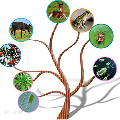The automotive industry is seen to have witnessed an increasing level of development in the past decades; from manufacturing manually operated vehicles to manufacturing vehicles with high level of automation. With the recent developments in Artificial Intelligence (AI), automotive companies now employ high performance AI models to enable vehicles to perceive their environment and make driving decisions with little or no influence from a human. With the hope to deploy autonomous vehicles (AV) on a commercial scale, the acceptance of AV by society becomes paramount and may largely depend on their degree of transparency, trustworthiness, and compliance to regulations. The assessment of these acceptance requirements can be facilitated through the provision of explanations for AVs' behaviour. Explainability is therefore seen as an important requirement for AVs. AVs should be able to explain what they have 'seen', done and might do in environments where they operate. In this paper, we provide a comprehensive survey of the existing work in explainable autonomous driving. First, we open by providing a motivation for explanations and examining existing standards related to AVs. Second, we identify and categorise the different stakeholders involved in the development, use, and regulation of AVs and show their perceived need for explanation. Third, we provide a taxonomy of explanations and reviewed previous work on explanation in the different AV operations. Finally, we draw a close by pointing out pertinent challenges and future research directions. This survey serves to provide fundamental knowledge required of researchers who are interested in explanation in autonomous driving.
翻译:汽车业被认为在过去几十年中出现了日益高水平的发展水平;从制造人工操作车辆到制造自动化程度较高的车辆;随着人工智能(AI)的最近发展,汽车公司现在采用高性能的AI模型,使汽车能够感知其环境,在几乎或完全没有人影响的情况下作出驾驶决定;由于希望在商业规模上部署自主车辆,社会接受AV已变得至关重要,并可能在很大程度上取决于其透明度、可信度和遵守规章规定的程度;通过为AV行为提供解释,可以促进对这些接受要求的评估;因此,解释性被视为AV行为的一个重要要求。AV公司应当能够解释其“看到”、做和可能在其经营环境中做的事情。在本文件中,我们对现有的工作进行了全面调查,可以解释自主驾驶。首先,我们开放地为解释和审查与AV公司有关的现有标准提供动力。第二,我们确定并区分参与AV公司行为发展、使用和监管的不同利益攸关方。因此,解释性能被视为AV公司的一个重要要求。AV公司应能够解释它们“在经营环境中所看到的情况”,最后要说明其研究方向,我们通过对AV公司进行深入调查提供所需的解释。



